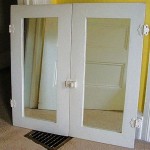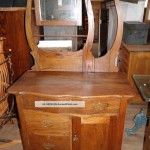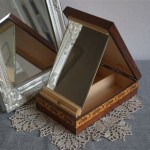Black Mirror Glass Mosaic Tiles: Aesthetics, Applications, and Considerations
Black mirror glass mosaic tiles, characterized by their reflective, dark surface, present a unique aesthetic option for various interior and exterior design projects. Their ability to absorb and reflect light simultaneously creates a dynamic visual effect, making them a popular choice for adding depth, sophistication, and a modern edge to spaces. This article will explore the properties, applications, installation, and considerations associated with black mirror glass mosaic tiles.
The allure of black mirror glass mosaic tiles stems from their unique combination of darkness and reflectivity. Unlike traditional dark tiles, the mirror finish enhances the perception of space by reflecting surrounding light and visuals. This creates a sense of openness and can visually expand smaller areas. Furthermore, the deep black hue provides a dramatic contrast against lighter elements, adding a touch of luxury and sophistication to any design scheme. The modular nature of mosaic tiles allows for intricate patterns and designs, offering creative flexibility that larger tile formats often cannot match.
Material Composition and Manufacturing
Black mirror glass mosaic tiles are primarily composed of glass, typically produced through a process of melting raw materials such as silica sand, soda ash, and limestone at high temperatures. The molten glass is then formed into sheets, cooled, and cut into small, uniform pieces to create the mosaic tiles. The defining characteristic – the "mirror" effect – is achieved by applying a reflective coating to the back of the glass. This coating usually consists of a thin layer of silver or aluminum, followed by a protective layer to prevent corrosion and abrasion. The tiles are then mounted onto a mesh backing for ease of installation.
The quality of the glass used significantly affects the tile’s durability and clarity. High-quality glass will exhibit fewer imperfections, a smoother surface, and a more consistent color. The reflective backing is also crucial; a well-applied and protected coating will ensure long-lasting reflectivity and resistance to damage from moisture and chemicals. The manufacturing process can also incorporate techniques to enhance the tiles’ scratch resistance and UV protection, making them suitable for a wider range of applications.
Different manufacturing techniques can influence the final appearance of the tiles. Some tiles may feature a perfectly smooth, unblemished surface, while others may incorporate subtle textures or variations in the reflective coating to create a more organic or distressed look. The choice of adhesive used to mount the tiles onto the mesh backing is also important, as it must be compatible with both the glass and the substrate to ensure a strong and durable bond.
Diverse Applications in Design
The versatility of black mirror glass mosaic tiles allows for their application in a broad spectrum of design settings. They are frequently used in bathrooms, kitchens, and living spaces to create focal points and add visual interest. In bathrooms, they can be used for accent walls, shower enclosures, or vanity backsplashes, adding a touch of glamour and luxury. In kitchens, they can be used as backsplashes behind countertops, reflecting light and enhancing the overall brightness of the space. In living rooms, they can be incorporated into fireplace surrounds, feature walls, or even furniture inlays to create a sophisticated and modern ambiance.
Beyond interior design, black mirror glass mosaic tiles are also suitable for some exterior applications, such as swimming pools, fountains, and building facades. However, it is crucial to select tiles specifically designed for outdoor use, as they need to be resistant to UV exposure, temperature fluctuations, and moisture. Special UV-resistant coatings and durable adhesives are necessary for ensuring the long-term performance and aesthetic appeal of these tiles in outdoor environments.
In commercial settings, black mirror glass mosaic tiles are often used in hospitality spaces, retail environments, and office buildings. In restaurants and bars, they can be used to create dramatic backdrops for bars or accent walls in dining areas. In retail stores, they can be used to highlight product displays or create visually appealing entrances. In office buildings, they can be incorporated into reception areas or conference rooms to add a touch of sophistication and professionalism.
Installation Considerations and Maintenance
Proper installation is essential for ensuring the longevity and aesthetic appeal of black mirror glass mosaic tiles. The substrate must be clean, level, and structurally sound. Uneven surfaces can cause the tiles to crack or detach over time. A high-quality thin-set mortar specifically designed for glass tiles should be used to adhere the tiles to the substrate. This type of mortar typically contains polymers that enhance its adhesion and flexibility, minimizing the risk of cracking or debonding.
The installation process involves spreading the thin-set mortar evenly over the substrate using a notched trowel, then carefully pressing the mosaic sheets into the mortar. It is important to ensure that the tiles are properly aligned and that the grout joints are uniform. After the mortar has cured, the grout is applied to fill the spaces between the tiles. Epoxy grouts are often recommended for glass mosaic tiles, as they are non-porous, resistant to staining, and easy to clean. The excess grout is then wiped away, and the tiles are polished to reveal their reflective surface.
Maintenance of black mirror glass mosaic tiles is relatively straightforward. Regular cleaning with a mild, non-abrasive cleaner is typically sufficient to remove dirt and grime. A soft cloth or sponge should be used to avoid scratching the reflective surface. Harsh chemicals and abrasive cleaners should be avoided, as they can damage the reflective coating and dull the tiles’ appearance. Periodic sealing of the grout joints can help prevent staining and mildew growth.
Scratch resistance is a vital consideration, especially in high-traffic areas. While the glass itself is relatively hard, the reflective coating is susceptible to scratches from abrasive materials. Using doormats to trap dirt and debris can help minimize the risk of scratching. In areas prone to spills, it is important to clean up any spills promptly to prevent staining or discoloration. With proper care and maintenance, black mirror glass mosaic tiles can retain their beauty and reflectivity for many years.
In summary, black mirror glass mosaic tiles provide a sophisticated and visually striking design element for both interior and exterior spaces. Understanding their composition, manufacturing process, diverse applications, and installation requirements is crucial for achieving optimal results and preserving their aesthetic appeal. The tiles' reflective nature, coupled with their dark hue, allows for the creation of unique and dynamic spaces that are both modern and luxurious. Selecting high-quality tiles and employing proper installation techniques will ensure long-lasting beauty and performance.

Black Combination Mirror Mosaic Tile Mode

Mirror Glass Mosaic Tile Bottom Beveled Edge Silver And Black Triangle Diflart

Mysterious Black Mirror Glass Mosaic Crystal Dimaond Tiles For Kitchen Backsplash Bathroom Wall Decor Cgmt05274

Elida Ceramica Glass Mosaic Black Mirror Uniform Squares Tile At Com

Black Square Mirror Mosaic Tile Mode

Mirror Glass Mosaic Tile Bottom Beveled Edge Silver And Black Triangle Diflart

Venice Black Polished Gloss Matt Mirror Effect Glass Marble 2x2 Mosaic Tile L 300mm W Diy At B Q

Mosaic Glass Tile Mirror Reflect Grey

Venice Black Polished Gloss Matt Mirror Effect Glass Marble 2x2 Mosaic Tile L 300mm W Diy At B Q

Wallpapers Shiny Mirror Crystal Glass Mixed Black Marble Stone Mosaic Tile For Kitchen Backsplash Bathroom Shower Cabinet Hallway Wall Deco From 291 51 Dhgate








